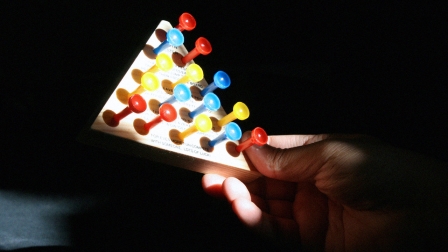The Right (And Wrong) Way To Gamify Work
Imagine web developers finishing a backlog of mundane ticketed tasks with a zeal usually reserved for playing Pokémon Go or watching a sports championship. The goal of “gamifying” work tasks is to turn otherwise tedious, long-term projects into fun, competitive experiences that get people excited.
In practice, it doesn’t always work that way. Gamification can be a powerful tool to boost workplace productivity and increase engagement, but it needs to be done right. Without clear rules and end goals, it often just leads to tensions and frustration. According to Gallup, only just one in three American workers get some kind of recognition over the course of a normal workweek, and gamification aims to change that, building well-earned praise into the ordinary work experience. At my company, we’ve figured out a few ways to do that successfully, motivating our tech teams to take on big projects, and even saving thousands of dollars along the way. These are the two components that, in our experience, are essential to making gamification actually work.
1. Designing With Players In Mind
A generic strategy that fails to incorporate team members’ skills and interests rarely succeeds. Gartner estimates that 80% of workplace gamification efforts fall flat due to a lack of creativity and meaning. If employees aren’t happy and don’t want to participate, the game could be worse than pointless—it could be counterproductive. Employees who are determined to win may cheat or sabotage their coworkers, while others may tune out and lose motivation.
Overusing competition can also lead to underperformance. Omnicare learned that tough lesson when the pharmacy-IT company tried to gamify customer service procedures, CIO.com reported in 2013. In an effort to decrease helpdesk wait times, Omnicare rolled out an employee leaderboard and offered cash incentives to the fastest players. The strategy backfired. Omnicare’s highly skilled employees felt like they were being overly monitored, which caused longer wait times and even wound up increasing employee turnover.
Lindsay Estrada, our company’s vice president of project management, is careful to choose themes our employees are drawn to as the basis for any project or process we try to gamify. When our tech team recently had a long list of backlogged tasks that were getting overlooked, Lindsay developed a unique solution.
When the 2016 Major League Baseball All-Star Game was happening in San Diego, just 500 yards from our office, our staff was hyped up on baseball to begin with. Each member of the tech team was given nine “innings” (days) to get through the mountain of tech tickets—an otherwise unpleasant task. Each ticket had three days to be completed, and we considered them a “loaded base” when they were awaiting deployment. For every closed ticket, an employee scored a “run.” After just nine days, the team had 19 homeruns with another nine bases loaded and waiting for deployment.
Incorporating a major event happening just down the street into tasks everyone had been putting off created a boost of motivation without making anyone feeling forced into participating.
2. Keep Employees’ Eyes On The Prize
Gamification won’t work if it’s just about having fun; it needs to improve employees’ productivity. That means keeping the desired outcome in mind first, then working backwards by building a measurable program to reach it. With complex tasks like coding or developing software, it can be hard to clearly see which team members are being truly productive.
So the key isn’t to set benchmarks for individual employees but instead to identify what’s truly valuable to the organization. By defining productivity at department and company level, you help your employees prioritize, rather than dictating precisely which tasks to do how and when in order to reach the overall goal.
The same holds true for gamification. By defining the rules both for the organizers and the participants, you can accurately measure whether a given initiative encourages employees to be productive in ways that provide real value. If it takes too much effort to tally results, for instance, that’s a sign your scheme is a waste of time.
Our tech team knew exactly what the rules were for our All-Star challenge, and which tasks were considered productive, thanks to the clear rules the project management team had set out. The organizers of the project also sent daily emails with quantifiable stats on homeruns, bases loaded, and outs remaining. The scoring template was easily filled out at the end of each day, which helped keep everybody’s eyes on the prize—not bogged down in the mechanics of playing the game at the expense of the work it was meant to help them accomplish.
Employee productivity is what keeps the wheels of a business turning. It might seem complicated to develop these programs regularly, but making work enjoyable and recognizing employees for their effort pays off. In fact, companies with recognition programs that genuinely reflect their values are 32% more productive. Play the game right, and everybody wins.
Jason Kulpa is the CEO of Underground Elephant, a customer-acquisition solution company.
Fast Company , Read Full Story
(27)


